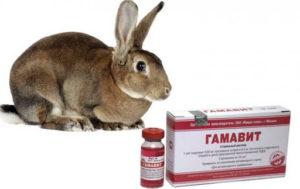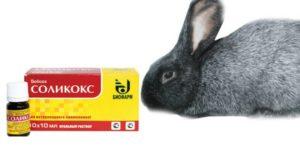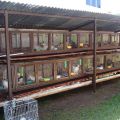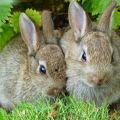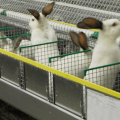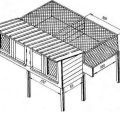How to feed rabbits in winter at home, rules for beginners
During the colder months, the diet of rabbits changes. The farmer needs to know how to properly feed the rabbits in winter so that their health does not deteriorate. Pet nutrition in winter should be nutritious and balanced to maintain fertility, fur quality and weight gain. Since fresh grass is unavailable in winter, feed preparation for the cold period should be done in advance: in summer and autumn.
Features of feeding in the winter
During the summer months, rabbits consume relatively little energy to keep the body running, so the extra calories are converted into fatty deposits, which add weight to giants and other meat breeds. But in winter, a significant part of the energy is spent on maintaining heat in the body in conditions of low ambient temperatures.
In the winter months, rabbits sweat less and the body easily maintains water balance. Therefore, an increase in the amount of drinking is not required, but the calorie content of food should be higher so that fat accumulations are not depleted, but continue to accumulate. Therefore, in winter, pets eat high-calorie food rich in vitamins and nutrients.
Since fresh plant food is not available in winter, dry food is given to rabbits, but it does not provide the body with sufficient vitamins and nutrients. To fill the lack of beneficial compounds in the rabbit diet include compound feed, juicy plant food, suitable for long-term storage.
Types of feed
Rabbits are sensitive to the quality of food, the diet for them in any season of the year must be balanced and healthy.
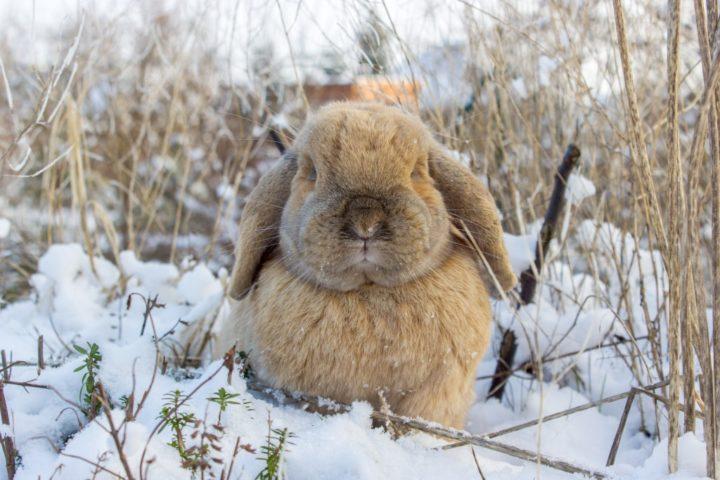
Roughage
Rough food is the name given to dried plants that are a rich source of fiber:
- hay;
- herbal flour;
- tree and shrub branches.
Dry food gives a feeling of fullness for a long time, has a positive effect on digestion. Daily portion in winter for an adult:
- 150-200 g of hay;
- 50-100 g of branches.
Hay is harvested taking into account the planned increase in livestock. If the harvested hay was not enough for the winter, then the remaining amount is fed to pregnant and lactating rabbits, their cubs, and the rest of the adults are transferred to a diet of oat, buckwheat or pea straw.
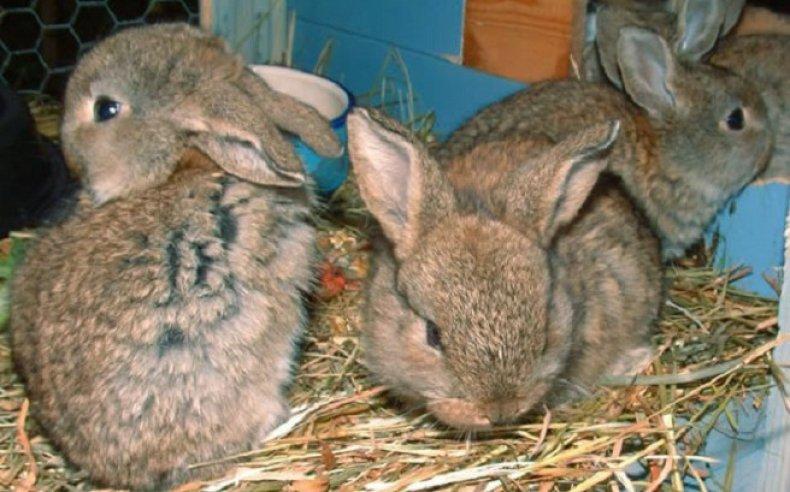
They prepare hay for the winter like this:
- Mow the grass before flowering.
- Lay out under the sun in a thin layer.
- After drying, they are transferred to a ventilated room.
- Ready hay is stored in a barn or under a canopy, covered with polyethylene.
Nettle, wormwood, red clover, tansy, alfalfa, Sudanese sorghum are beneficial for the digestion and health of rabbits.
Branches of the following tree and shrub species are suitable for feeding rabbits in winter:
- apple trees;
- rowan;
- raspberries;
- linden;
- ash;
- hazel;
- alder;
- aspen;
- willow;
- poplar.
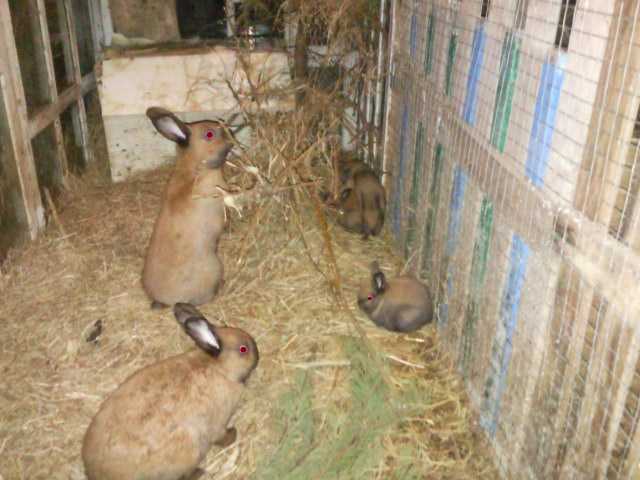
Branches up to 1 cm thick are harvested in the middle of summer. They are combined into brooms, dried in a shaded place.
Juicy feed
Juicy is a food that contains 60-90% liquid. Healthy, well digestible, rich in vitamins, minerals, nutrients, fiber, food is vegetables, root crops, silage.
Recommended for rabbits in winter:
- boiled potatoes;
- carrots;
- zucchini;
- pumpkin;
- turnips;
- cabbage (rarely and in small portions, so as not to provoke flatulence);
- fodder beets.
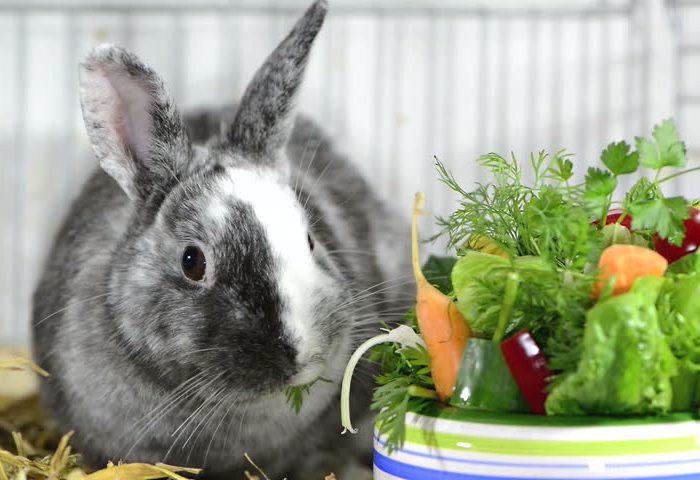
Food waste
You cannot treat rabbits with human food. But there are exceptions: it is permissible to give pets potato peelings, dried bread crusts, carrot tops, radish leaves. The daily portion of food waste should not exceed 150 g per individual.
Concentrated feed
Concentrated feeds are sources of nutrients necessary for animals to gain weight. They are rich in proteins and carbohydrates, high in calories.
In winter, rabbits are given:
- bran;
- cereal grains;
- cake;
- meal.

Compound feed
Combined feed is a solid balanced mixture of animal and plant products that supplies the body with the substances necessary for full development and productivity. The component composition is determined by the purpose of raising animals: for the sake of meat or fur. In rabbits that consume compound feed in winter, productivity increases by 10-15%. As part of compound feed:
- cereal grains (oat, barley, wheat, corn) - 30-40%;
- broad beans;
- bran;
- sunflower or other oil-rich seeds;
- linseed, sunflower or hemp cake, meal - 10-15%;
- bone meal, yeast - about 2%;
- salt, chalk.

Diet in winter
Rabbits can easily survive frost, provided that they have good quality nutrition that makes up for the calorie deficit. In order for the animals to have enough energy in winter, the daily portion is doubled, and on frosty days - 3 times.
For adults
The basis of the diet of rabbits that remain outside for the winter is vegetables and hay. Vegetables harvested in autumn are the main supplier of vitamins and minerals to the body. They are given to rabbits 2 times a day. It is advisable that the daily diet of pets includes 4-5 different vegetables and root crops.
Approximate daily portion of food for an adult in the cold season:
- hay - 200 g;
- grain - 100 g;
- branches - 50-100 g;
- vegetables and root crops - 200 g;
- bran - 50 g;
- bone meal - 5 g;
- salt - 2 g.

For rabbits
The daily portion of feed is determined by the age of the rabbits. Cubs up to 2 months old in winter are given:
- 50 g of rough food;
- 30-40 g concentrated;
- 150-180 g of vegetables and root crops;
- 0.5 g salt and bone meal.
Rabbits 3-4 months old should receive:
- 100 g of rough food;
- 50-60 g concentrated;
- 250-300 g juicy;
- 0.6-0.7 g of salt and bone meal.
Actively growing half-year-old rabbits in winter are given:
- 150 g of rough food;
- 60-70 g concentrated;
- 350-400 g juicy;
- 2 g salt and bone meal.
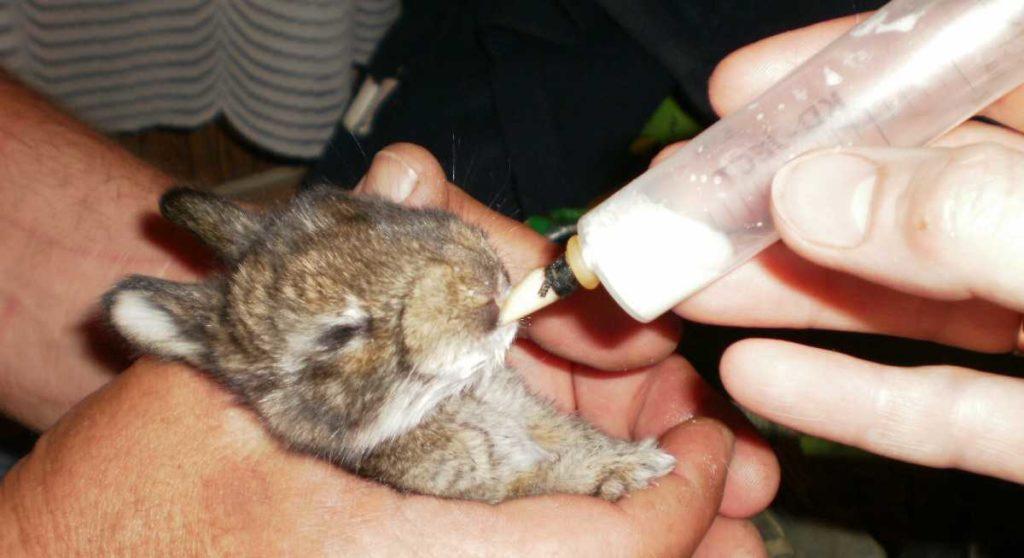
Recommendation for novice farmers: juicy feed should be introduced into the diet of young individuals very carefully, starting with minimal portions, since the body of a rabbit can react to new food with a disorder of the digestive tract.
For pregnant and lactating rabbits
The rabbit's body devotes a lot of energy to the development of embryos, so in winter, the diet should include a sufficient amount of vitamins and bone meal. The percentage of rough food is reduced, the portion of concentrated feed is increased to 60%. The daily amount of bone meal is gradually increased from 5 to 20-30 g.
For a good milk production, the rabbit is given more boiled potatoes, zucchini, carrots, pumpkin. For the same purpose, natural, village-made whey is added to the mash. Sprouted wheat grains are given as a source of vitamins.
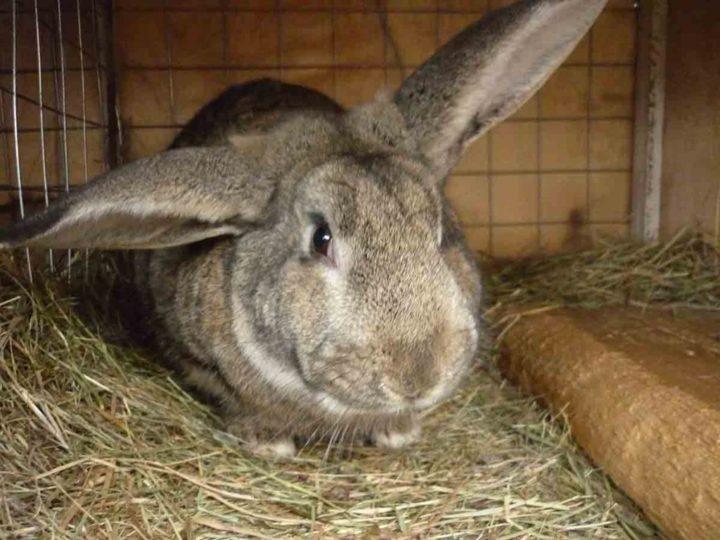
Decorative rabbits
The diet of domestic rabbits is different. Decorative animals have a delicate digestive tract, therefore, feeding with the above food is unacceptable.
The basis of the diet in winter is meadow hay. At the pet store, you can buy wheat grains for sprouting forage grass.
The vegetable component should be small, otherwise the pet will have digestive problems. You can treat your rabbit with an apple, carrot, salad, parsley, Jerusalem artichoke, banana peel. Ornamental rabbit is not fed with cabbage, fodder beets and potatoes. The first two vegetables provoke digestive problems, and the third leads to obesity.
Approximate diet for a pet in winter:
- 200 g of hay;
- 50-100 g of branches;
- 100 g of vegetables and root crops;
- 150 g of grass and leafy greens;
- 50 g of concentrated food.
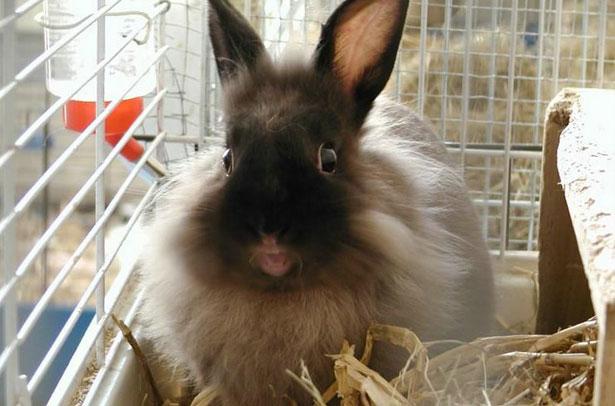
What can not be fed
Do not treat rabbits:
- bakery and pasta products;
- chocolate sweets, baked goods;
- meat products;
- dairy products;
- nuts;
- citruses and other exotic fruits;
- peas, beans, hard seeds and grains;
- branches of stone fruit trees (cherry, apricot, plum, peach);
- bulbs of ornamental plants (may be poisonous);
- rhubarb (an extremely poisonous plant for rabbits);
- compound feed for livestock and birds.
The hay and vegetables for rabbits should be free of mold, sand and dust, signs of decay and fermentation.
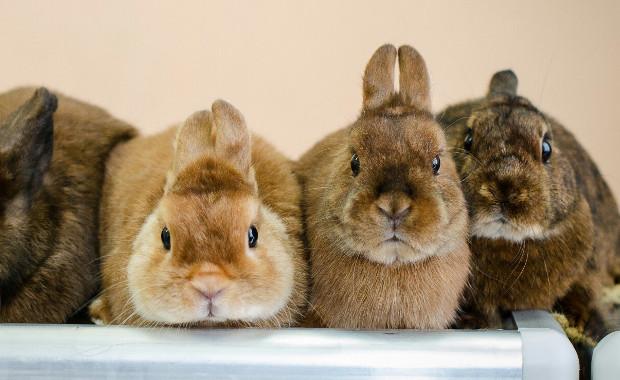
You can not give pets plants of the Buttercup family, branches of elderberry, buckthorn, bird cherry. These plants are poisonous to rabbits.
Expert advice
Beginners should follow the advice of experienced farmers:
- To replenish vitamins A and D, rabbits are given fish oil. The daily portion is 1 g, for young animals - 0.5 g, for a lactating female - 3 g.
- Bone meal is essential so that rabbits are not deficient in calcium and phosphorus. And salt is a source of chlorine and sodium.
- Compound feed can be used as the basis of the diet, or it can be added to food for balance. If rabbits eat natural food fully and qualitatively, then the use of compound feed is not mandatory.
- It is useful to periodically give the rabbits pine, spruce, and juniper needles in winter. It contains carotene, tocopherol, B-group vitamins. Coniferous branches are cut and dried.
- Sunflower seeds are an excellent source of energy for maintaining body heat.
The transition from summer to winter diet should be smooth, stretched over several days, so that the rabbit's digestive tract has time to rebuild. Winter feed is prepared in advance so that feeding the pets in the cold period does not become a problem that reduces the productivity of the livestock.
